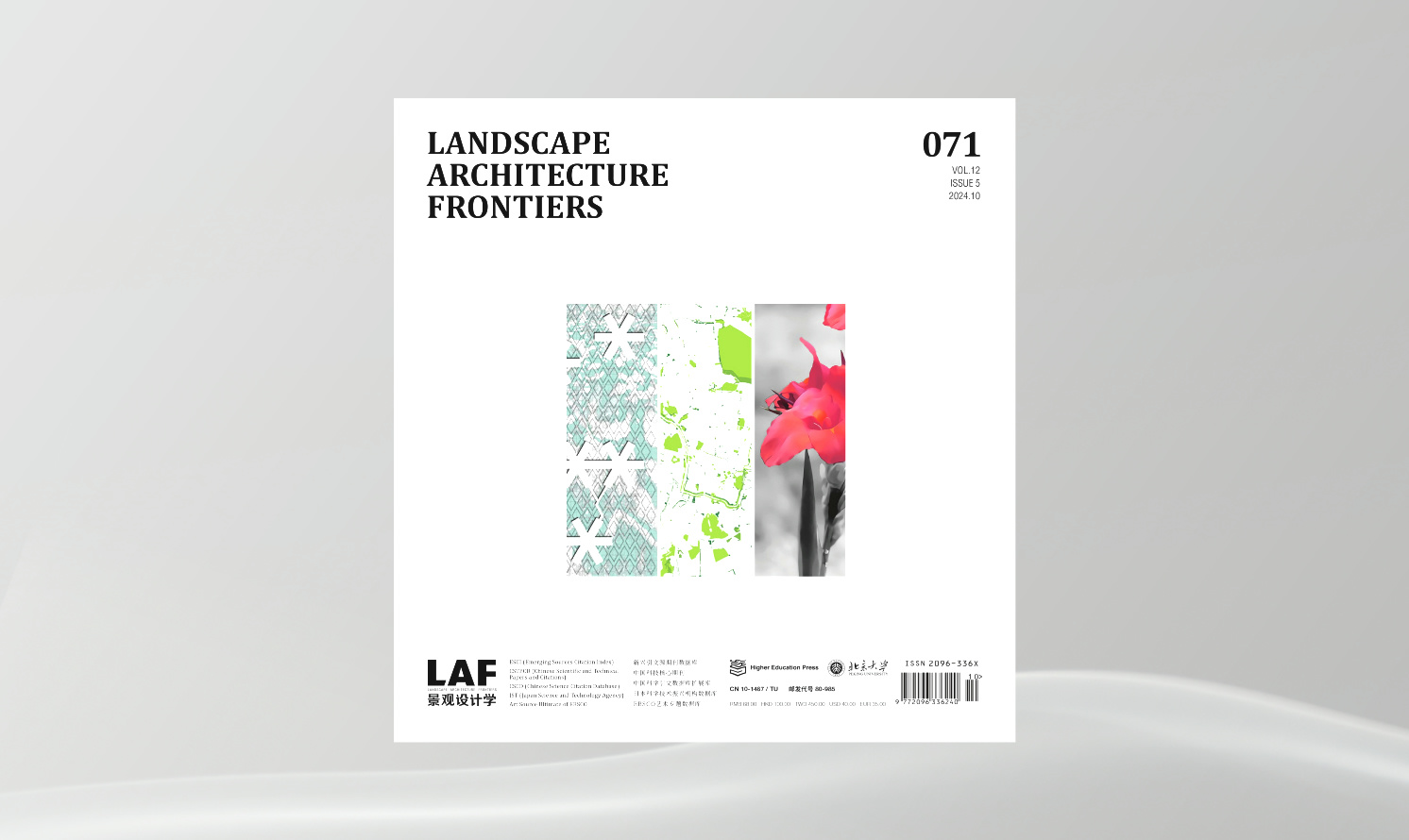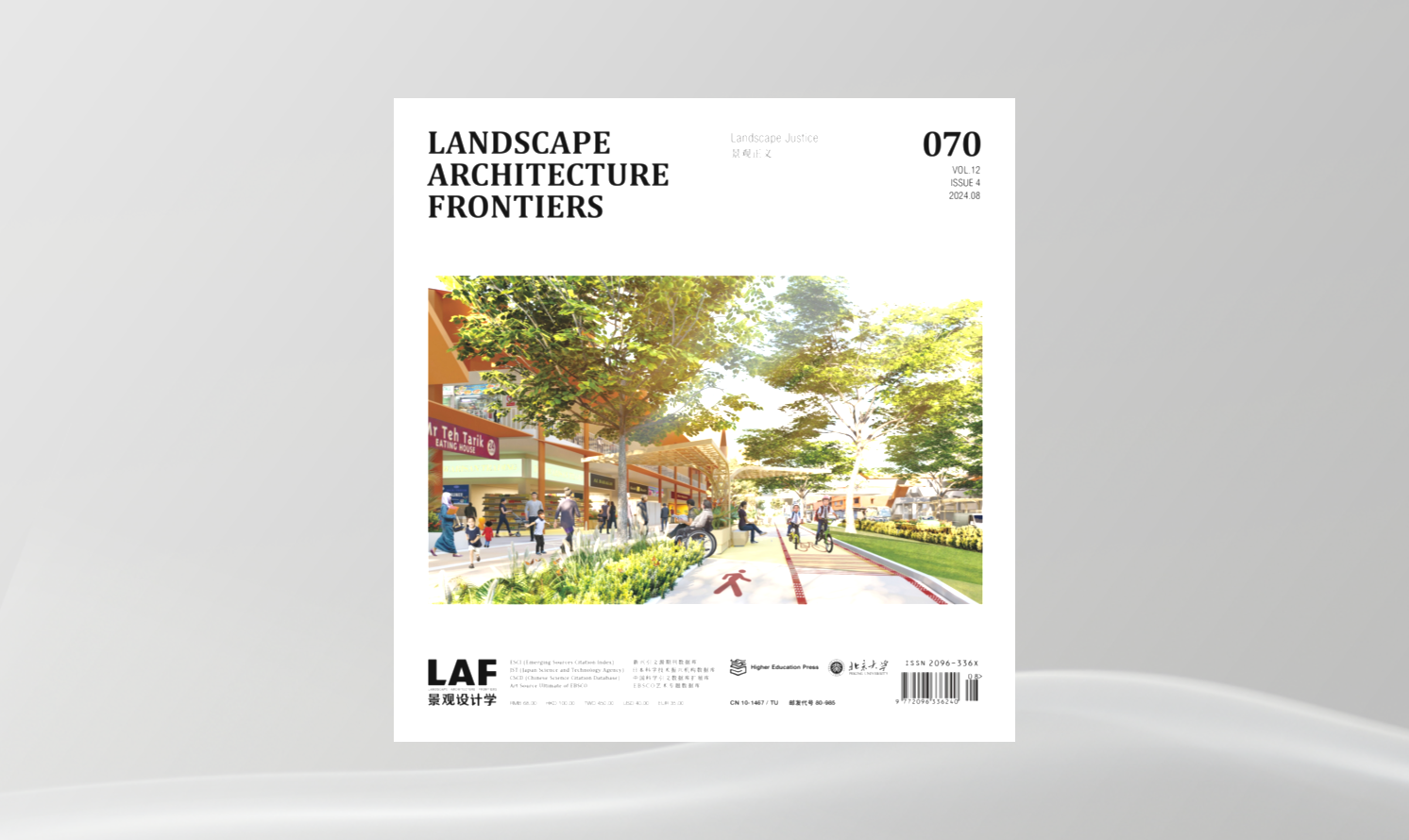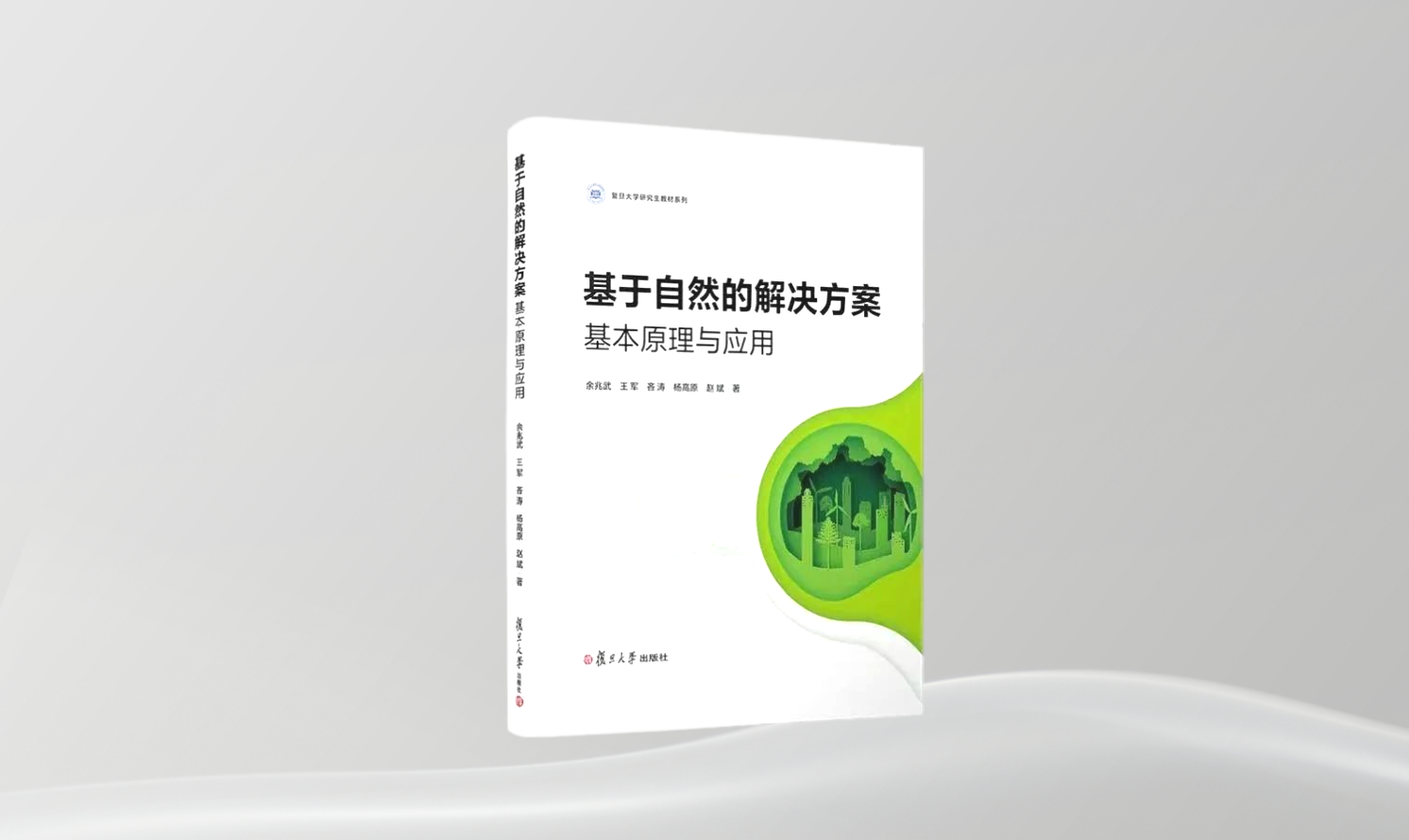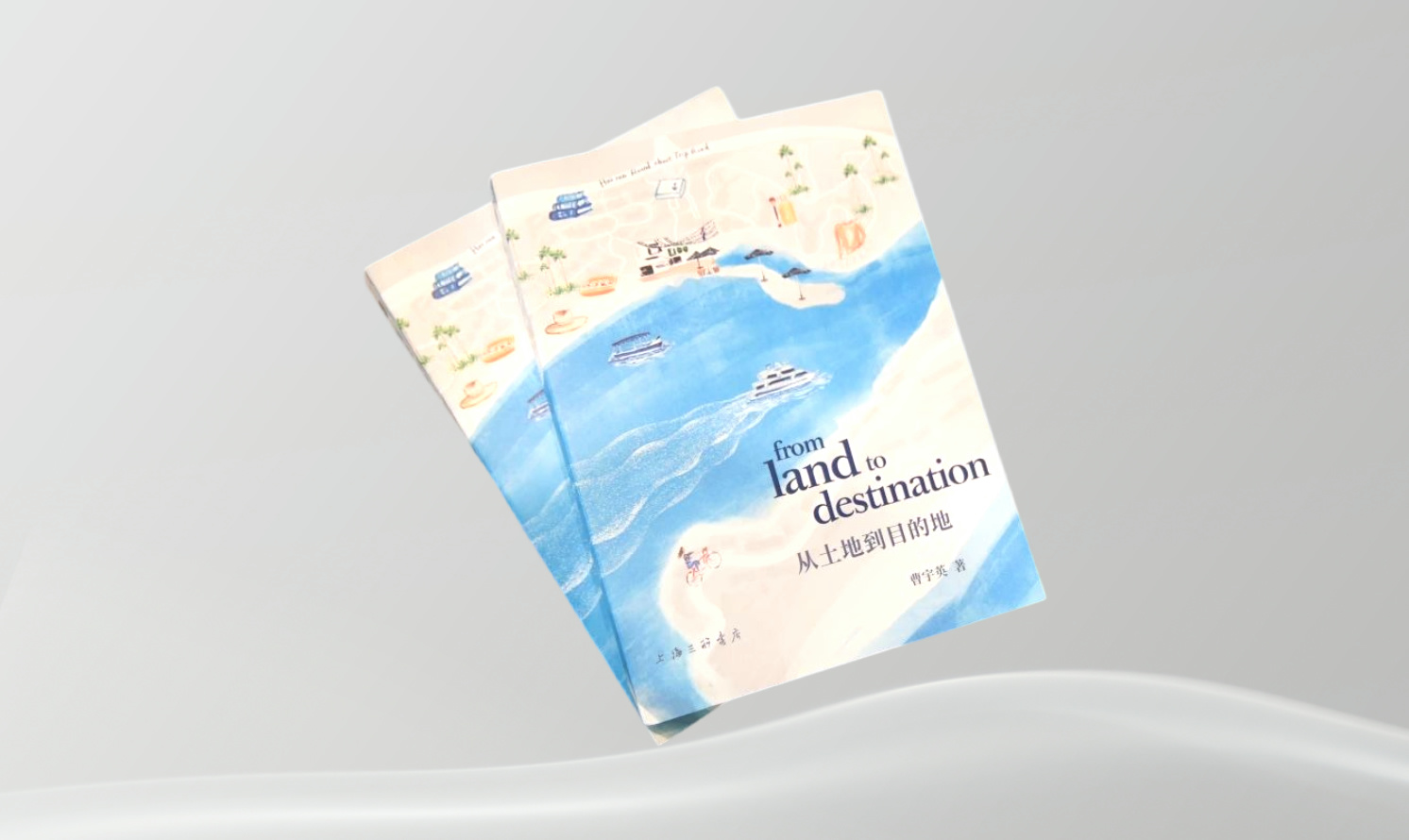基于碳足跡的中國(guó)能源消費(fèi)生態(tài)安全格局研究
The Ecological Security Pattern of China’s Energy Consumption Based on Carbon Footprint
作者:劉某承 Moucheng LIU
摘要
工業(yè)化和城鎮(zhèn)化進(jìn)程在推動(dòng)人類(lèi)文明和生活進(jìn)步的同時(shí)���,也加劇了對(duì)生態(tài)系統(tǒng)產(chǎn)品和服務(wù)的消費(fèi)�����。能源消費(fèi)的碳足跡的增加及吸納其產(chǎn)生的CO2所需的林地的減少�����,已成為生態(tài)赤字的主要原因�,也對(duì)國(guó)土生態(tài)安全造成了重要影響�����。本文基于碳足跡對(duì)中國(guó)能源消費(fèi)的生態(tài)安全格局的影響進(jìn)行了分析�,研究發(fā)現(xiàn):1949年以來(lái)中國(guó)大陸人均碳足跡增長(zhǎng)了20倍;碳足跡的生態(tài)赤字對(duì)國(guó)土安全的威脅未得到有效控制����,這種影響仍將長(zhǎng)期存在���;能源資源的分布不均及社會(huì)經(jīng)濟(jì)發(fā)展的區(qū)域差異等因素造成碳足跡的區(qū)域流動(dòng),對(duì)國(guó)土生態(tài)安全帶來(lái)額外的壓力和威脅����;最后,本文指出應(yīng)從區(qū)域能源消耗量以及自然生態(tài)稟賦兩個(gè)角度來(lái)考慮中國(guó)能源消費(fèi)的生態(tài)安全格局���。
關(guān)鍵詞
能源消費(fèi)�����;碳足跡����;生態(tài)承載力����;生態(tài)系統(tǒng)服務(wù);生態(tài)安全
Abstract
Industrialization and urbanization have improved people’s standard of living, but these two processes have also accelerated consumption of ecological goods and services. China’s increasingly high carbon footprint relative to energy consumption and the decreasing ability of forestlands to absorb CO2 have become primary causes of ecological degradation while also effecting China’s territorial ecological security. This paper analyzes China’s carbon footprint to determine how the ecological security pattern has been effected by regional energy consumption. China’s per capita carbon footprint has doubled more than twenty times since 1949, while the relationship of ecological deficit to territorial security has not been adequately considered. Regional differences in carbon footprint, due to the uneven distribution of energy resources as well as uneven social and economic development, now threaten China’s territorial ecological security. Finally, this paper suggested that regional energy consumption and natural ecological reserves are the two factors most effecting the ecological security pattern of China’s energy consumption.
Key words
Energy Consumption; Carbon Footprint; Bio-capacity; Ecosystem Services; Ecological Security
“反規(guī)劃”途徑:理論����、應(yīng)用與展望
Theory, Application and Prospect of Negative Planning Approach
作者:李博�����,黃梓茜 Bo LI, Zixi HUANG
摘要
“反規(guī)劃”是一種通過(guò)優(yōu)先控制非建設(shè)區(qū)域來(lái)進(jìn)行空間規(guī)劃的逆向規(guī)劃途徑�。它以景觀安全格局為方法論��,以生態(tài)基礎(chǔ)設(shè)施為規(guī)劃戰(zhàn)略和成果�,形成一個(gè)維護(hù)國(guó)土安全和保障土地生態(tài)系統(tǒng)服務(wù)功能的綠色網(wǎng)絡(luò),作為控制城市建設(shè)用地增長(zhǎng)的剛性框架�����。本文分析了“反規(guī)劃”的概念特征與理論體系�����,論述了近十年來(lái)該理論在國(guó)土尺度的空間規(guī)劃與國(guó)土保護(hù)規(guī)劃���、海綿城市建設(shè)、新型城鎮(zhèn)化和新農(nóng)村建設(shè)4個(gè)方面的新發(fā)展�����;隨后綜合述評(píng)了其應(yīng)用領(lǐng)域和實(shí)踐探索;最后基于研究現(xiàn)狀�����,提出了對(duì)接耦合“正反規(guī)劃”�����、強(qiáng)化定量實(shí)證研究���、考慮城市自組織增長(zhǎng)和存量更新�、加強(qiáng)管控實(shí)施等研究展望���。
關(guān)鍵詞
“反規(guī)劃”途徑�;景觀安全格局����;生態(tài)基礎(chǔ)設(shè)施;新型城鎮(zhèn)化�;生態(tài)文明
Abstract
Negative Planning Approach is a reverse spatial planning method which gives priority to preserving and planning non-urban development area. Taking landscape security pattern as its methodological base, Negative Planning Approach is a rigid framework to control urban growth, aiming to develop ecological infrastructure plans as its planning strategy and results, and establishing a green network which can ensure national territorial security and ecosystem services. This article reviews the concept and theories of Negative Planning Approach and elaborates its new theoretical advances in the fields of spatial planning and protection planning of national territory, sponge city construction, new urbanization, and new rural construction. Then it further reviews the application and exploration of Negative Planning Approach in the past decade. Finally, this article points out the insufficiency of the current research on Negative Planning Approach, and puts forward prospects including the combination of Negative Planning Approach with conventional planning methods, strengthening quantitative evidence-based study, taking urban self-organized growth and inventory renewal into consideration, and enhancing related management and implementation.
Key words
Negative Planning Approach; Landscape Security Pattern; Ecological Infrastructure; New Urbanization; Ecological Civilization
中國(guó)生態(tài)環(huán)境現(xiàn)狀及趨勢(shì)剖析
Current Situation and Trend of China’s Ecosystems
作者:歐陽(yáng)志云 Zhiyun OUYANG
摘要
本采訪首先對(duì)生態(tài)安全、生態(tài)安全格局���、景觀生態(tài)安全格局等概念進(jìn)行了辨析����,并強(qiáng)調(diào)了在設(shè)計(jì)實(shí)踐中將景觀設(shè)計(jì)學(xué)與生態(tài)學(xué)相結(jié)合的重要性。隨后對(duì)生態(tài)系統(tǒng)生產(chǎn)總值核算的概念��、產(chǎn)生背景和應(yīng)用范圍進(jìn)行了介紹����,并就剛剛完成的“全國(guó)生態(tài)環(huán)境十年變化(2000-2010年)調(diào)查評(píng)估”系統(tǒng)性地分析了中國(guó)生態(tài)環(huán)境狀況與變化趨勢(shì),以及生態(tài)系統(tǒng)質(zhì)量與服務(wù)功能的變化情況���,并探討了未來(lái)中國(guó)生態(tài)環(huán)境保護(hù)與城市生態(tài)建設(shè)的方向���。最后,受訪人還對(duì)城市規(guī)劃建設(shè)中存在的生態(tài)保護(hù)紅線劃定����、部門(mén)協(xié)作困難等問(wèn)題進(jìn)行了剖析����。
關(guān)鍵詞
生態(tài)安全格局;生態(tài)系統(tǒng)生產(chǎn)總值��;全國(guó)生態(tài)環(huán)境十年變化
Abstract
This interview started with distinguishing the concepts of ecological security, ecological security pattern, and landscape ecological security pattern and stressed the importance of the integration of landscape architecture and ecology in design practice. Then it introduced the concept of Gross Ecosystem Product, its background, and the scope of its application. The just-completed “National Ecosystem Survey and Assessment of China (2000-2010)” systematically assessed the status and trends of China’s ecosystems, analyzed the changes in ecosystem quality and services, and explored the future of environmental protection and urban ecological construction. Finally, the interviewee also analyzed the difficulties in urban planning and construction, concerning ecological protection redline delimitation and department cooperation.
Key words
Ecological Security Pattern; Gross Ecosystem Product; National Ecosystem Survey and Assessment of China (2000-2010); Ecological Protection Redline
“多規(guī)合一”實(shí)踐中的生態(tài)探索
Explorations in Multiple-plan Integration Practice
作者:胡耀文 Yaowen HU
摘要
自中央城鎮(zhèn)化工作會(huì)議提出“探索建立統(tǒng)一的空間規(guī)劃體系����,推進(jìn)規(guī)劃體制改革”以來(lái)�,全國(guó)多個(gè)城市開(kāi)展了“多規(guī)合一”的實(shí)踐工作��。2015年6月�,中央全面深化改革領(lǐng)導(dǎo)小組第十三次會(huì)議同意海南開(kāi)展省域“多規(guī)合一”改革試點(diǎn)。海南省是全國(guó)第一個(gè)開(kāi)展省域空間規(guī)劃的改革試點(diǎn)�。中國(guó)城市規(guī)劃設(shè)計(jì)研究院承擔(dān)了海南省及省內(nèi)12個(gè)市縣的規(guī)劃編制工作,規(guī)劃團(tuán)隊(duì)在這次采訪中分享了他們?cè)谑∮蚣笆锌h兩級(jí)的空間規(guī)劃體系�、生態(tài)環(huán)境保護(hù)規(guī)劃、生態(tài)紅線劃定等方面的思考與實(shí)踐��。
關(guān)鍵詞
多規(guī)合一����;空間規(guī)劃;海南?�?���;省域;市縣�;生態(tài)環(huán)境保護(hù)
Abstract
Since the establishment of a unified spatial planning system was introduced at the Central Urban Work Conference, a number of cities across China have introduced “multiple-plan integration” urban planning practices. In June 2015, the 13th Meeting of the Central Leading Group for Deepening Overall Reform approved a proposal in Hainan Province to carry out a province-wide “multiple-plan integration” reform pilot. The Hainan example represents the first province-wide spatial planning. China Academy of Urban Planning and Design led the planning work of Hainan Province and its twelve cities and counties. This interview focuses on the academy’s method and process during the project.
Key words
Multiple-Plan Integration; Spatial Planning; Hainan Province; Provincial Region; Cities and Counties; Ecological Environment Protection
中國(guó)生態(tài)基礎(chǔ)設(shè)施建設(shè)與思考
Practice and Reflections on the Ecological Infrastructure Construction in China
作者:約翰?蘭斯 John LENTH
摘要
隨著中國(guó)新型城鎮(zhèn)化進(jìn)程的推進(jìn),生態(tài)基礎(chǔ)設(shè)施建設(shè)受到的關(guān)注日益增加����,包括海綿城市建設(shè)在內(nèi)的大批生態(tài)基礎(chǔ)設(shè)施項(xiàng)目也不斷涌現(xiàn)����。荷瑞然環(huán)境咨詢(xún)有限公司作為一家擁有豐富經(jīng)驗(yàn)的環(huán)境科學(xué)與工程顧問(wèn)公司����,在近10年間深度參與了中國(guó)的生態(tài)基礎(chǔ)設(shè)施建設(shè),在見(jiàn)證了中國(guó)在城市與景觀設(shè)計(jì)領(lǐng)域理念上的轉(zhuǎn)變與技術(shù)上的改進(jìn)的同時(shí)�,也洞悉了設(shè)計(jì)和實(shí)踐過(guò)程中暴露出來(lái)的問(wèn)題,并形成了對(duì)中國(guó)未來(lái)的生態(tài)基礎(chǔ)設(shè)施建設(shè)的建議�。
關(guān)鍵詞
生態(tài)基礎(chǔ)設(shè)施;低影響開(kāi)發(fā)��;新型城鎮(zhèn)化�����;海綿城市建設(shè)�;雨洪管理
Abstract
With the transition towards a new urbanization, China’s ecological infrastructure construction has gained more and more attention, resulting in a large number of ecological infrastructures including Sponge City projects. As an experienced environmental science and engineering firm, Herrera has been closely working on China’s ecological infrastructure projects over the past decade. In this interview, Herrera recognizes the theoretical changes and technical improvement, notes the shortages and difficulties in practice, and shares their perspectives on China’s future ecological infrastructure construction.
Key words
Ecological Infrastructure; Low Impact Development; New Urbanization; Sponge City Construction; Stormwater Management
丹麥哥本哈根暴雨防控詳細(xì)規(guī)劃
COPENHAGEN CLOUDBURST CONCRETIZATION PLAN, DANMARK
作者:索爾?維爾斯赫伊�����,安娜?亞絲拉琪?隆德����,尼爾?休?麥克萊恩?戈林���,呂煥來(lái) S?ren HVILSH?J, Anna Aslaug LUND, Neil Hugh McLean GORING, Cathy LV
摘要
在海綿城市設(shè)計(jì)中,對(duì)城市宜居性的提升應(yīng)與對(duì)氣候的適應(yīng)并重����。作為此方面的典范,丹麥?zhǔn)锥几绫竟械谋┯攴揽匾?guī)劃提出了一套雄心勃勃的計(jì)劃�����,旨在幫助城市免受未來(lái)的暴雨之害�。總體規(guī)劃確立后���,哥本哈根市政府開(kāi)始著手為城市的各個(gè)分區(qū)制定具體的海綿城市景觀設(shè)計(jì)方案��。此次景觀設(shè)計(jì)將不僅能夠應(yīng)對(duì)日益頻繁的極端暴雨天氣���,還可以大幅度提升城市的宜居性,造福今時(shí)與后世的居民����。此外��,整套規(guī)劃的總體耗資也低于傳統(tǒng)的暴雨防控工程設(shè)計(jì)�����。
關(guān)鍵詞
海綿城市���;暴雨防控規(guī)劃;宜居性�;雨水滯留;公園�;街道
Abstract
Improved livability and climate adaption should go hand in hand when designing sponge cities. The cloudburst masterplan for Copenhagen, the capital of Denmark, is an example of an ambitious effort to protect the city against future heavy rain events. Following the masterplan, the city began to implement the sponge city landscape design for each Copenhagen district. The landscape design was intended to not only deal with more frequent extreme weather events, but also significantly improve urban livability for both present and future residents. This effort was achieved for less of an investment than traditional cloudburst engineering design.
Key words
Sponge City; Cloudburst Plan; Liveability; Retention; Park; Street
從閑置土地到生態(tài)基礎(chǔ)設(shè)施——休斯頓市曼徹斯特街區(qū)彈性設(shè)計(jì)方案
From Idle Grounds to Ecological Infrastructures — The Resilient Design of Manchester Neighborhood in Houston
作者:蓋倫?紐曼�,金埈鉉,菲爾?伯克����,杰里米?梅里爾���,王洋鏑,李秋碩 Galen NEWMAN, Jun-Hyun KIM, Phil BERKE, Jeremy MERRELL, Yangdi WANG, Qiushuo LI
摘要
該項(xiàng)目位于美國(guó)德克薩斯州休斯頓市曼徹斯特街區(qū)���,項(xiàng)目采用了參與式過(guò)程及時(shí)通報(bào)各類(lèi)設(shè)計(jì)決策。在生態(tài)基礎(chǔ)設(shè)施建設(shè)過(guò)程中�,閑置及未得到充分利用的土地是設(shè)計(jì)關(guān)注的重點(diǎn)�。該設(shè)計(jì)方案將場(chǎng)地綠地面積提高了7倍����,大大加強(qiáng)了街區(qū)減緩洪水的能力。
關(guān)鍵詞
休斯頓��;洪水����;生態(tài)基礎(chǔ)設(shè)施;綠地�����;參與式設(shè)計(jì)
Abstract
This project uses a participatory process to inform design decision making in the Manchester neighborhood of Houston, Texas, USA. Vacant and underutilized parcels are stressed as key facets for ecological infrastructure placement. The proposed design increases green spaces seven times its current amount, strengthening the neighborhood’s capability to attenuate flooding.
Key words
Houston; Flood; Ecological Infrastructure; Green Space; Participatory Design
菲律賓阿納納斯新社區(qū)總體規(guī)劃——以整體性食物系統(tǒng)方式改善人居環(huán)境與社會(huì)可持續(xù)性
Master Plan for Ananas New Community in the Philippines — A Holistic Food Systems Approach to Habitat Enhancement and Social Sustainability
作者:Sasaki設(shè)計(jì)事務(wù)所 Sasaki
摘要
像世界上許多正在發(fā)展的大都市地區(qū)一樣�����,馬尼拉的經(jīng)濟(jì)增長(zhǎng)是以犧牲農(nóng)業(yè)用地和水資源質(zhì)量為代價(jià)的���,這導(dǎo)致該地區(qū)現(xiàn)有社區(qū)賴(lài)以生存的資源受到了威脅��。阿納納斯社區(qū)代表了一種非傳統(tǒng)的城市開(kāi)發(fā)方式�,其旨在保護(hù)這些極為關(guān)鍵的資源,并彰顯菲律賓的農(nóng)業(yè)����、社會(huì)和生態(tài)傳統(tǒng),為歌頌社區(qū)團(tuán)結(jié)與合作的“百雅尼漢”精神予以了全新詮釋��。
關(guān)鍵詞
農(nóng)業(yè)街區(qū)�;生態(tài)設(shè)計(jì);總體規(guī)劃���;菲律賓�;社會(huì)和經(jīng)濟(jì)效益
Abstract
Like many growing metropolitan areas worldwide, Manila’s growth comes at the expense of agricultural land and water quality, compromising the lifeline resources of the region’s existing communities. Ananas represents an alternative approach to urban development that aspires to secure these vital resources while celebrating the agricultural, social, and ecological heritage of the Philippines and its “bayanihan” spirit of communal unity and cooperation in a contemporary and innovative manner.
Key words
Agricultural Neighborhoods; Ecological Design; Master Plan; The Philippines; Social and Economic Benefits
以山水為畫(huà)布:衢州鹿鳴公園
Terrain and Water as Canvas: Luming Park in Quzhou
作者:俞孔堅(jiān) Kongjian YU
摘要
鹿鳴公園項(xiàng)目場(chǎng)地地形復(fù)雜����,丘陵地貌、河灘沙洲�����、平原灌叢兼具����,鄉(xiāng)土景觀遺產(chǎn)零星分布于其間。在這樣的境況下����,設(shè)計(jì)師摒棄了鏟平式的工程處理方式�,轉(zhuǎn)而將具有生產(chǎn)性的農(nóng)業(yè)景觀與低維護(hù)的鄉(xiāng)土植物融于景觀設(shè)計(jì)之中�,創(chuàng)造出了一個(gè)景觀層次豐富���、風(fēng)光旖旎的城市公園�����。項(xiàng)目中運(yùn)用“雨洪管理”�、“都市農(nóng)業(yè)與生產(chǎn)性景觀”����、“最小干預(yù)”等理念,在利用山水格局和自然植被的基礎(chǔ)上��,通過(guò)棧道等游憩網(wǎng)絡(luò)來(lái)“框定”山水和植被���,最終實(shí)現(xiàn)對(duì)景觀的改造���。
關(guān)鍵詞
濱水公園;生態(tài)���;步道����;生產(chǎn)性景觀;文化遺產(chǎn)
Abstract
The site of the Luming Park was a remnant patchwork landscape made up of rolling hills, a riparian flood plain along the river basin and vegetated areas of bushes and grasses, etc. Scattered in this landscape were some local landscape heritages. Instead of leveling the site, which is conventionally used in dealing with such situation, the landscape architects created a dynamic urban park by incorporating the agricultural strategy of crop rotation and a low maintenance meadow. Ideas such as “stormwater management,” “agricultural urbanism and productive landscape,” and “minimum intervention” were integrated into the landscape design strategy to “frame the terrain and water,” by quilting boardwalks and trail networks for recreation onto the site.
Key words
Waterfront Park; Ecology; Pedestrian Paths; Productive Landscape; Cultural Heritage
寧波甬江平臺(tái)公園
Yong River Platform Park in Ningbo
作者:艾奕康環(huán)境規(guī)劃設(shè)計(jì)(上海)有限公司 AECOM
摘要
密集的高層住宅區(qū)普遍缺乏開(kāi)放空間��,這已成為了一種典型的中國(guó)城鎮(zhèn)化現(xiàn)象��。這樣的居住環(huán)境會(huì)導(dǎo)致人們形成一種疏于運(yùn)動(dòng)的生活方式�����,與自然的接觸也非常有限���。這個(gè)占地面積83hm2的平臺(tái)公園坐落于寧波市中心以東5km處�����,致力于解決上述由城鎮(zhèn)化所帶來(lái)的矛盾�,并創(chuàng)建一個(gè)城市開(kāi)發(fā)核心區(qū)域���,同時(shí)為周邊的新建社區(qū)���、技術(shù)企業(yè)���、高等院校,以及文化機(jī)構(gòu)(包括一座歷史悠久的寺廟)提供重要的開(kāi)放空間����。尤其值得一提的是,項(xiàng)目一期工程為多代家庭提供了其大量所需的開(kāi)放空間����,造福了搬遷至此的周邊社區(qū)��。這個(gè)面積為2.5hm2的一期工程增進(jìn)了人與水濱的關(guān)系����,通過(guò)提供一系列功能設(shè)施和景觀類(lèi)型,為人們營(yíng)造了日常鍛煉和接觸自然的機(jī)會(huì)��。甬江平臺(tái)公園不僅具備應(yīng)對(duì)臺(tái)風(fēng)的彈性和適應(yīng)氣候變化的能力�,還為居民健康、社交互動(dòng)以及生態(tài)修復(fù)創(chuàng)造了契機(jī)��。
關(guān)鍵詞
平臺(tái)公園����;生態(tài)基礎(chǔ)設(shè)施��;甬江�;彈性����;氣候變化;生態(tài)
Abstract
Typical of urbanization in China, dense, high-rise relocation residences have poor open space provision, leading to sedentary lifestyles and limited contact with nature. Located 5 km east of the city center of Ningbo, the 83-hectare Platform Park strives to solve the conflict and creates a centerpiece of the urban development, providing a significant open space for adjacent new communities, technology sector, universities, and cultural facilities including a historic temple. Particularly, the first phase provides a much-needed open space for multi-generational families, directly benefiting an adjacent relocation community. The 2.5-hectare area has transformed the way people connect to the waterfront, encouraging daily exercise and contact with nature through a diverse range of uses and landscape types. The park integrates typhoon resilience, climate change adaptation and creates a platform for health, fitness, social interaction and ecological restoration.
Key words
Platform Park; Ecological Infrastructure; Yong River; Resilience; Climate Change; Ecological Restoration
關(guān)于暴洪與沙漠的思考
Flash Floods and Desert Claims
作者:伊爾瑪?赫爾克斯肯斯 Ilmar HURKXKENS
摘要
美國(guó)亞利桑那州的索諾蘭沙漠集潮濕與干燥���、酷熱與嚴(yán)寒����、永恒與短暫為一身��。瑞士蘇黎世聯(lián)邦理工大學(xué)克里斯托弗?吉魯特教授的景觀設(shè)計(jì)課程�,正是選擇在這樣極端的環(huán)境條件下研究新的聚落類(lèi)型。從初期的沙盤(pán)模型草圖到后期的計(jì)算機(jī)模擬����、數(shù)控模型和水動(dòng)力模擬,該設(shè)計(jì)課程以動(dòng)手實(shí)踐的方式來(lái)了解該場(chǎng)地暴洪和侵蝕的自然過(guò)程��。該課程要求學(xué)生在構(gòu)造聚落時(shí)囊括對(duì)自然過(guò)程和杰斐遜網(wǎng)格的雙重考量���,以期將基礎(chǔ)設(shè)施�、建筑與生態(tài)融合在一套設(shè)計(jì)方案之中。對(duì)于學(xué)生來(lái)說(shuō)�����,針對(duì)形式及功能的聚落設(shè)計(jì)方案都源于這種對(duì)自然—人工雙重規(guī)則的疊加��;這片壯美的自然之地幾乎找尋不到任何人為的痕跡���,使索諾蘭沙漠成為完美的試驗(yàn)場(chǎng)地���。伴隨著設(shè)計(jì)課程的推進(jìn)��,我們逐漸明晰:在這一洪水多發(fā)地區(qū)�,生成聚落方案的唯一方法就是將山谷之大尺度與人的足跡之小尺度同時(shí)考量。該課程的最終方案呈現(xiàn)出了一種對(duì)構(gòu)造學(xué)及類(lèi)型學(xué)都具有清晰認(rèn)知的新型沙漠環(huán)境聚落設(shè)計(jì)策略�����。
關(guān)鍵詞
景觀設(shè)計(jì)學(xué)���;基礎(chǔ)設(shè)施����;沙漠;聚落����;類(lèi)型學(xué)
Abstract
The landscape design studio of Professor Christophe Girot at the Swiss Federal Institute of Technology in Zurich, Switzerland investigated new settlement typologies within the extreme environmental condition of the Sonoran Desert in Arizona: wet and dry, hot and cold, permanent and ephemeral. From early sketches in sand models to computer simulations, CNC models and water dynamics, the studio took a hands-on approach in understanding the natural processes of flash floods and erosion on the site. The integration of infrastructure, architecture and ecology into a single design solution challenged the students to structure the settlements with respect to both natural processes and the Jeffersonian grid. For the students, both the formal and the performative settlement solutions arose from this superimposition where the sublime nature of the site, being exempt of almost any human artifact, proved to be the perfect testing ground. During the course of the studio, it became clear that the only way to solve a settlement principle in this flood prone area was to develop design solutions on the large scale of the valley and at the scale of a single step simultaneously. The final projects showed a clear understanding of the tectonic and topological expression for a new type of occupation in the desert.
Key words
Landscape Architecture; Infrastructure; Desert; Settlement; Typology
探尋卓有成效的基礎(chǔ)設(shè)施——生態(tài)機(jī)場(chǎng)景觀
The Search for Fertile Infrastructure — Ecological Airport Landscapes
作者:勞拉?西普里亞尼 Laura CIPRIANI
摘要
航空運(yùn)輸如何改變了景觀?景觀和機(jī)場(chǎng)基礎(chǔ)設(shè)施是否能夠根據(jù)生態(tài)標(biāo)準(zhǔn)進(jìn)行整合�?機(jī)場(chǎng)如何能夠融入當(dāng)?shù)丨h(huán)境?我們能夠運(yùn)用什么樣的設(shè)計(jì)工具���?城市環(huán)境又會(huì)因此發(fā)生怎樣的變化�����?我們?nèi)绾螀f(xié)調(diào)機(jī)場(chǎng)當(dāng)前所需的技術(shù)要求與不可預(yù)知的場(chǎng)地未來(lái)的新需求���?在未來(lái),廢棄的機(jī)場(chǎng)基礎(chǔ)設(shè)施如何能夠得到“回收利用”�?
帶著這些問(wèn)題,本文講述了針對(duì)機(jī)場(chǎng)景觀的4個(gè)研究議題——“機(jī)場(chǎng)都市主義”���、“生態(tài)機(jī)場(chǎng)都市主義”�����、“特雷維索機(jī)場(chǎng)都市主義”和“卓有成效的基礎(chǔ)設(shè)施”——背后的故事���,試圖在景觀與城市層面探索設(shè)計(jì)生態(tài)機(jī)場(chǎng)系統(tǒng)的實(shí)驗(yàn)方法��。
關(guān)鍵詞
生態(tài)基礎(chǔ)設(shè)施����;機(jī)場(chǎng)景觀�;機(jī)場(chǎng)都市主義
Abstract
How is the landscape modified by air transportation? Can the landscape and airport infrastructure be integrated following ecological criteria? How can an airport be integrated into the local context? What design devices can be used? What are the influences on the urban context? How can we accommodate the current technological needs of airports with new unexpected uses in the future? In the future, how might disused airport infrastructure possibly be “recycled”?
This article tells the story behind four main research projects on airport landscapes — “Airport Urbanism,” “Ecological Airport Urbanism,” “Treviso Airport Urbanism” and “Fertile Infrastructure” — in an attempt to explore an experimental methodology to design an ecological airport system at landscape and urban scale.
Key words
Ecological Infrastructure; Airport Landscape; Airport Urbanism
 京公海網(wǎng)安備 110108000058號(hào)
京公海網(wǎng)安備 110108000058號(hào)











